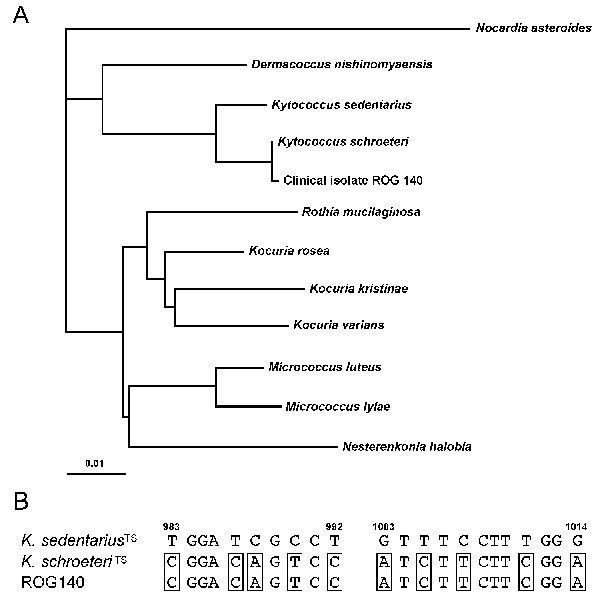Volume 11, Number 1—January 2005
Letter
Kytococcus schroeteri Endocarditis
Figure

Figure. (A) Phylogenetic tree showing relationships among 16S rDNA sequences of clinical isolate ROG140 and type strains of members of the former Micrococcus genus. Nocardia asteroides was included as an out-group organism. The scale bar represents 1% differences in nucleotide sequences. (B) Sequence alignment of 16S rDNA nucleotides 983-992 and 1003-1014 of Kytococcus sp. type strains (TS) and clinical isolate ROG140. K. schroeteri molecular signatures are boxed. Nucleotide numbering refers to the sequence of the 16S rDNA of E. coli.
Page created: April 15, 2011
Page updated: April 15, 2011
Page reviewed: April 15, 2011
The conclusions, findings, and opinions expressed by authors contributing to this journal do not necessarily reflect the official position of the U.S. Department of Health and Human Services, the Public Health Service, the Centers for Disease Control and Prevention, or the authors' affiliated institutions. Use of trade names is for identification only and does not imply endorsement by any of the groups named above.